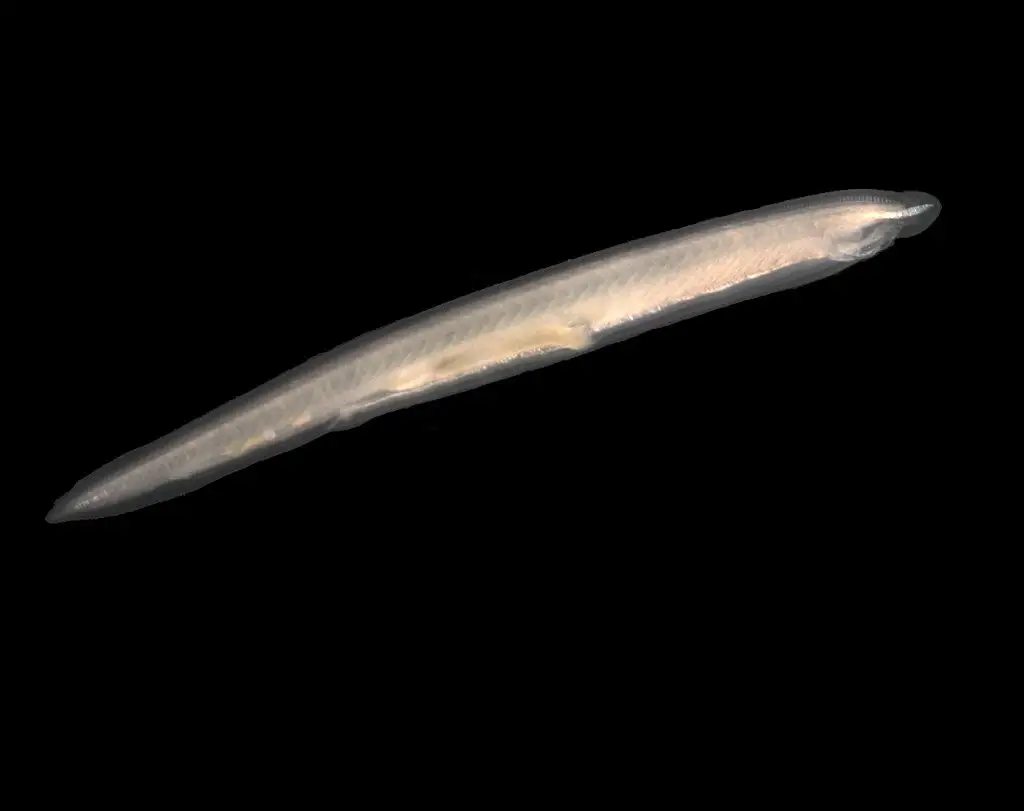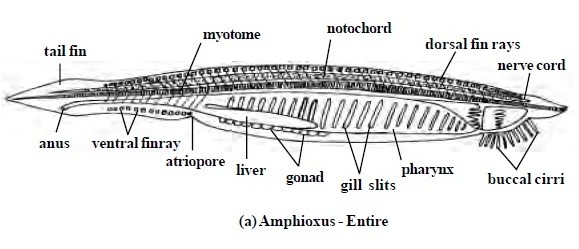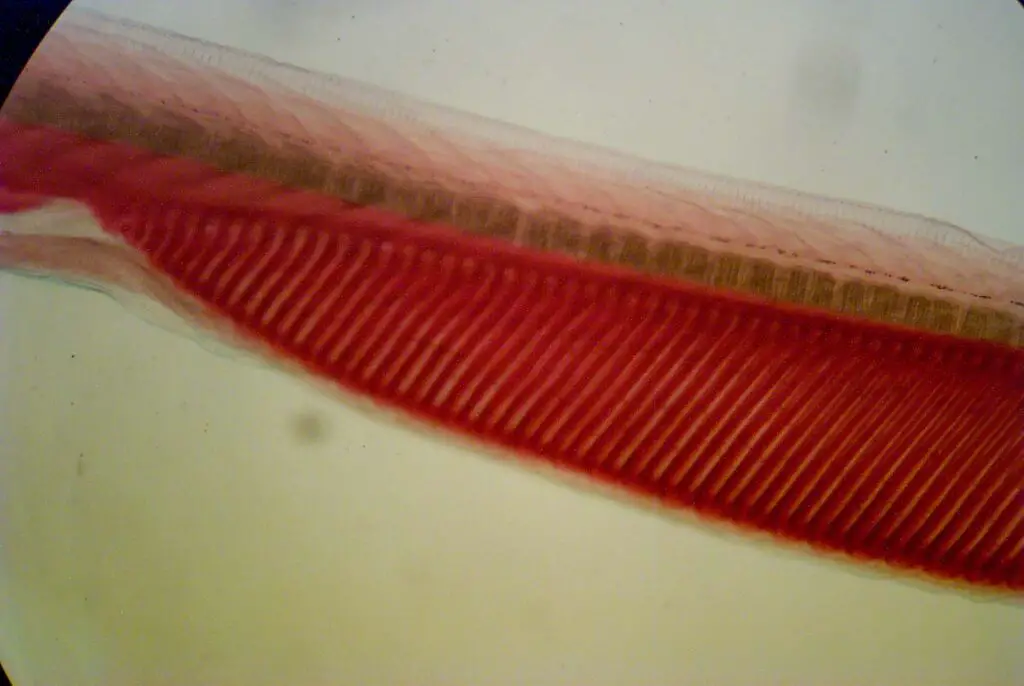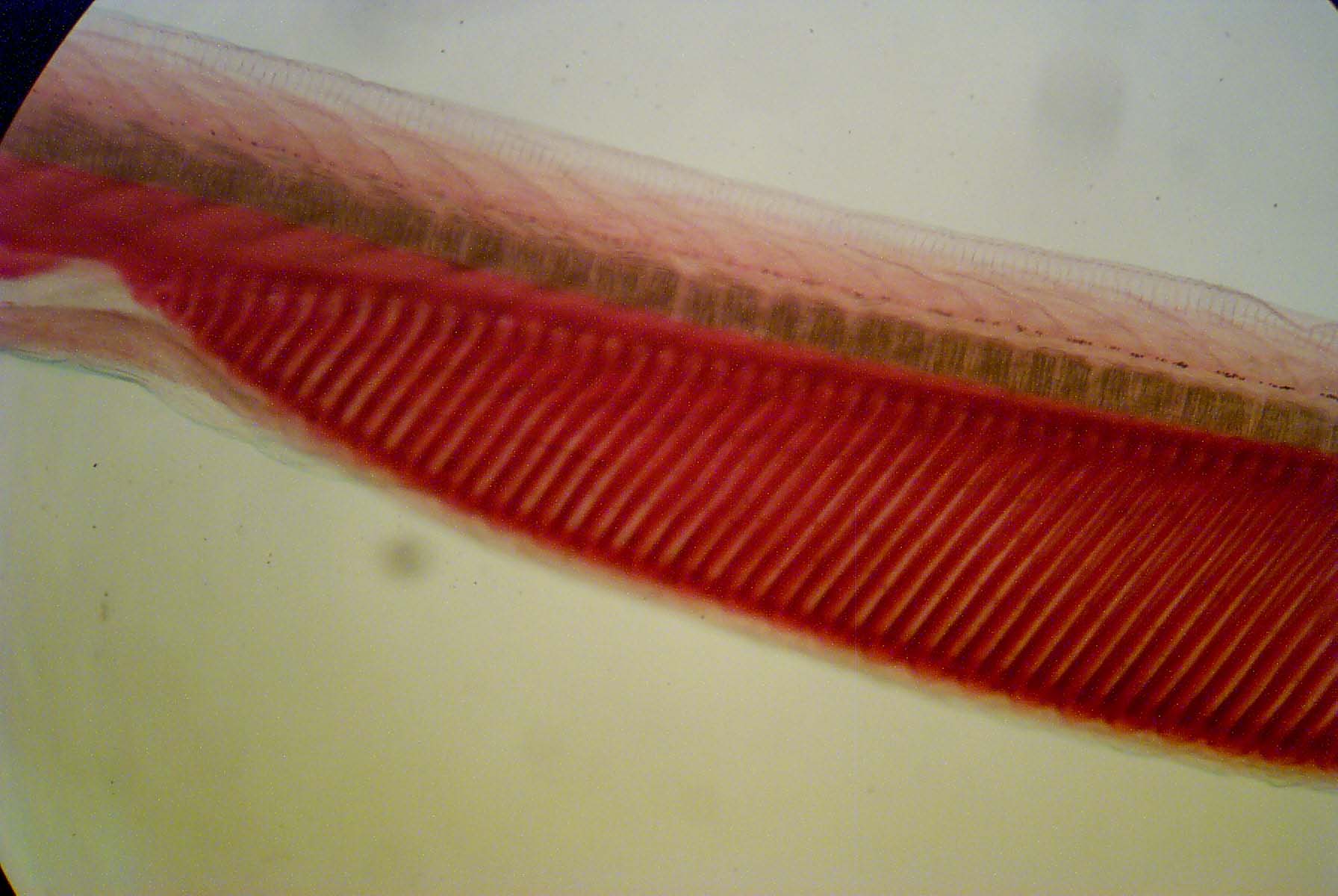Table of Contents
Shape of Branchiostoma:
Branchiostoma has a lance-like shape, both anterior and posterior end of the body tapering and pointed. But the posterior end is more tapering than the anterior part, the lance-like shape makes them famous in the common name Lancelets. The body is laterally compressed and this lance-like streamlined body makes them suitable for living in the burrows as well as helping in swimming.
Colour of Branchiostoma:
Branchiostoma has a translucent body and it appears a whitish colouration.
Size of Branchiostoma:
Branchiostoma has a size of 5 to 7 centimetres almost look like a small fish.
External Morphology of Branchiostoma:
In adult Branchiostoma the brain remains absent due to degeneration, so in adult Branchiostoma the body has two parts, trunk and tail. In the anterior part of the body, the larger part of the body is known as the trunk while the posterior narrower part is known as the tail. The tail is present after the anus and it is muscular, so the tail is the actual Chordata post-anal tail.
Trunk:
The trunk region at the posterior end become pointed and this pointed part of the trunk is known as the snout or rostrum. The rostrum part of the trunk form the oral hood on the anterior part, the dorsal and lateral projection of the rostrum make the oral hood. On the anterior part of the ventral side, the mouth opens outside through a large aperture. The anterior oral hood part of rostrum make the margin of the mouth opening.

On the ventral side at the base of the ventral fin, a circular aperture is present, it is known as atriopore. The mouth lead to pharynx, on outside the pharynx is surrounded by atrial cavity, the atrial cavity open outside through the atriopore present on the mid-ventral position of the trunk.
In trunk total, three apertures are present, one on anterior part mouth opening, another is atriopore at the base of ventral fin and the last one is the anus which presents at the base of caudal fin. The mouth opening and atriopore present on the mid-ventral line but the anus shift towards the left slightly from the mid-ventral line, presenting a slightly asymmetrical position.
The anus a much smaller than the atriopore and the mouth opening and present at the end of the trunk, after the anus the next posterior narrower part of the body is tail.
Fin and Folds in Branchiostoma:
Branchiostoma have total of three median unpaired fins, dorsal fin, caudal fin and ventral fin. On dorsal side along the mid-dorsal line Branchiostoma have longitudinal unpaired fin from anterior part of the trunk to posterior end of the body.
The dorsal fin finally joins with the caudal fin at the posterior end, the caudal fin present around the tail. From the caudal fin on the ventral side of the body, Branchiostoma has a ventral fin along the mid-ventral line up to the atriopore.

The caudal fin is much broader than dorsal and ventral fin, the dorsal fin is less broad than the ventral fin. The dorsal and ventral fin is supported by rectangular fin rays but the caudal fin has no mechanical support by fin rays. The fin rays in the dorsal and ventral fin are made of connective tissue and completely different than the fin rays in fish.
At the anterior part of the trunk along the two ventrolateral margins, two hollow folds are present which is known as metapleural folds. The metapleural folds start from the oral hood and help Branchiostoma to make burrows.
Myotomes and Gonads in Branchiostoma:
In Branchiostoma a special arrangements of muscle fibres seen from outside through the transparent body wall known as myotomes or myomeres. The myotomes show the metameric segmentation, a important characteristics found in higher Chordate. Gonad present in longitudinal rows below the myotomes from mouth to atriopore.

Reference
Detailed Information on
Characteristics Features of Subphylum Urochordata
Classification of Subphylum Urochordata
Examples of Subphylum Urochordata: Clavellina, Salpa, and Doliolum
Hi Everyone!!! Welcome to Imaluop. Imaluop always try to learn some new and he want to share to other people. Here we will try to learn various topics on Science, specially on Biological Sciences.
